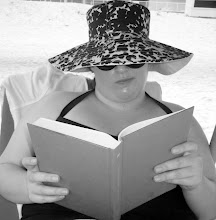We have a great guest post today that I am really exited about! Thanks again, Tara, for guest blogging for me! I appreciate it SO MUCH!!!
______________________________________________________
Hi, y’all, this is Tara, a wife and mother to 8-month-old twin girls who just moved to central Ohio. My husband and I bought our first home last September, a 100-year-old cottage and we’re in the very beginning stages of renovating while inhabiting the house and blogging about it at Cottage 1910. I’m originally from Alabama, and I grew up loving the etiquette of the South and all things genteel. I have always treasured beautiful handwriting and I remember in second grade painstakingly practicing my capital G because I just couldn’t get it right. Years later, this love of fine writing has led me to learn pointed pen calligraphy and embark on a business adventure. I always thought I could just pick up a pen and with some time and practice I would magically be able to copy and write as a master penman. This is pretty far from the truth. There are foundational hands and foundational pen strokes that are really important to master before embarking on your own font creation. I have only very recently started learning the pointed pen arts, but I would like to quickly share with you a simplified 3-step process to learning calligraphy. I’ll try to include ideas of cost and time commitments as well.
 |
| An example of how calligraphy can set the tone and carry the theme throughout wedding paper goods.Source |
Step 1: Decide how you want to learn.
There are really two ways to learn calligraphy—with a teacher or on your own. I personally have a teacher who comes to my home for $10 a lesson once a week for about an hour and a half. Honestly, having her demonstrate each stroke then watch me and instruct me in the middle of writing difficult letters (I don’t even want to talk about a capital O right now) has been the best experience for me. You can find a teacher in your area by contacting your local calligraphy guild or by looking around at the International Association of Master Penmen, Engrossers, and Teachers of Handwriting website (www.iampeth.com). However, there are many ways to self-teach. The Tamblyn Book ($24.90 from Ziller of Kansas City—they also make great inks) and The Zanerian Manual ($55 new from Amazon.com) are both well respected beginners’ books. You can also find online tutorials of specific scripts at zanerian.com and the IAMPETH site.
Step 2: Gather your supplies.
The essential tools to get started in calligraphy are ancient. You’ll need paper to write on, ink to write with, a nib to hold the ink and a penholder to hold the nib. The best paper to practice on is Rhodia graph paper from The Container Store ($5.49), but you can also use Ampad graph paper (available at Staples for $4.49) or Kodak Ultimate Photo Paper, 24# weight (available at your local big box), though the Kodak is not ruled so I wouldn’t start there! A good ink to practice with is Higgins Eternal Black ($2.39 from Amazon.com). For best results, you’ll want to add 8-10 drops of gum Arabic (try your local art store for this) to the Higgins. There are many good quality inks out there and a few are Ziller’s of Kansas City, McCaffrey’s inks and Moon Palace Sumi for great Japanese stick inks. Those are just for starters! As you get to know your supplies better over time, you’ll develop your favorites.
The decision between various nibs and penholders really depends on the look and style you’re going for and what works best for how you tend to write. You won’t really know what works best for you until you try them—for instance, do you want a more flexible or rigid nib? Do you want an adjustable penholder so you can hold your pen at different angles? It can get complicated! This is where having a calligraphy mentor can be a huge asset. Calligraphers are a friendly bunch who tend to enjoy passing on information to each other, so even if you don’t have an official teacher, forming a relationship with an established calligrapher to answer your many questions is a great idea!
But back to writing supplies. My teacher suggested a Speedball oblique pen ($2.35 at Amazon.com) to start learning engrosser’s script and I have three basic nibs (the Gillott 1068A, 303 and 404 are great starter nibs and generally run $0.75-$0.95 each). I would not recommend the Speedball oblique. All of my frustrations have really stemmed from the nib falling from that pen, or the pen leaking. There are some better but still inexpensive plastic penholders available from Paper & Ink Arts (www.paperinkarts.com) for about $13 that would be great for experimenting and finding out if you want to continue to pursue calligraphy.
 |
| Beautiful hand work with some impressive flourishes!Source |
Step 3: Practice, practice, practice.
Whether you use a teacher or a book, you should learn first how to set up your space and your paper and then begin your basic strokes. It takes time and practice to become consistent with all the lines and slants that make up letters. I didn’t write a single letter until my third lesson! It was all foundational strokes. Practice every day and practice individual strokes to encourage muscle memory of each letter. Then be sure to clean up and care for all of your tools so they can serve you and your art for many years!
 |
| A creative way to replace place cards and still keep the writing theme going. |
__________________________________________________
Thank you again, Tara! Everyone please go give Tara's amazing blog a visit!








































